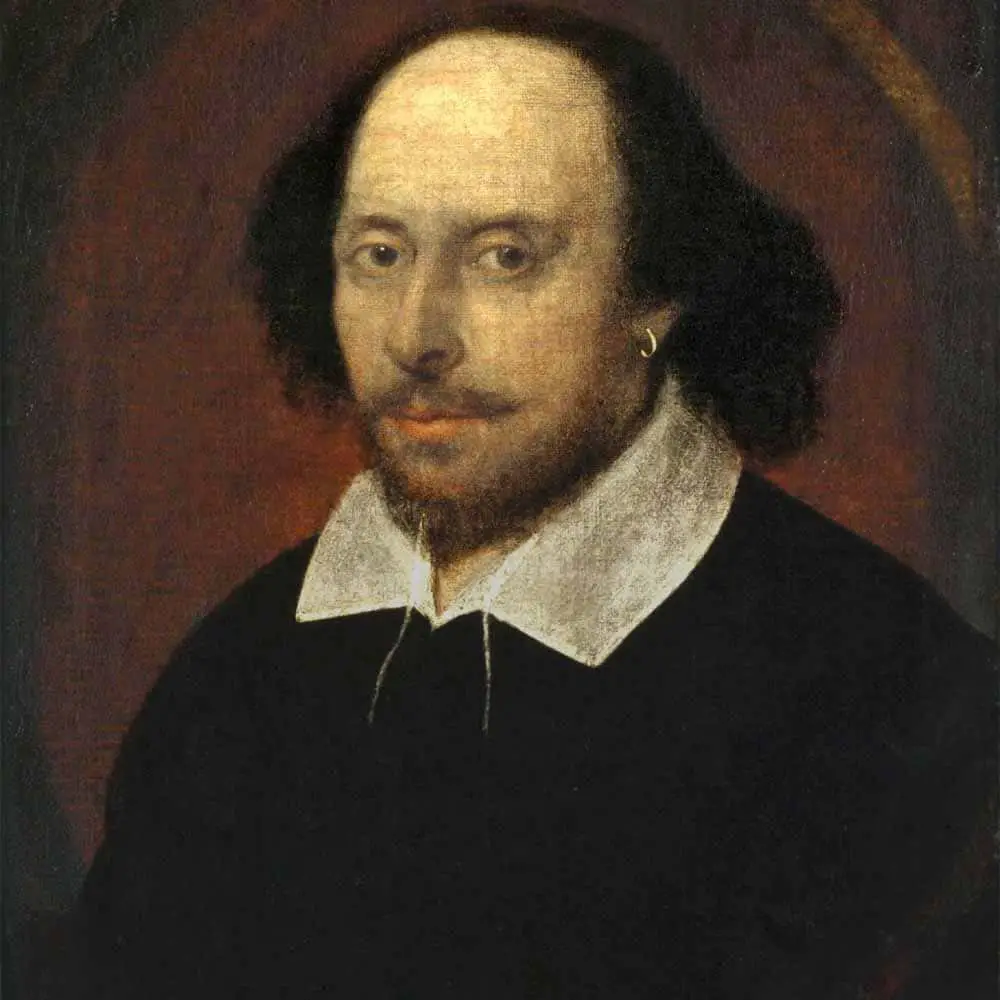
William Shakespeare: Unveiling the Bard’s Timeless Genius
William Shakespeare, a preeminent figure in English literature, was born in Stratford-upon-Avon in 1564. He was not only a playwright but also a poet and actor, making significant contributions to the English language and its literature. His works encompass a vast array of human emotions and conflicts, with characters that have become timeless icons in the literary world. His influence is seen across various forms of modern storytelling and literary expression.
Often referred to as the Bard of Avon, Shakespeare’s early life in Stratford shaped his understanding of the human condition, which he masterfully expressed through his body of work. His plays, written in the late 16th and early 17th centuries, include comedies, tragedies, and histories, a testament to his versatility as a writer. His ability to weave complex characters and memorable lines has solidified his legacy as one of the greatest playwrights in history.
Shakespeare’s poetry, including his sonnets, is equally revered for its richness and depth. While details of his personal life remain sparse, the impact of his literary masterpieces is well-documented. His work has been translated into every major living language and is performed more often than those of any other playwright. Engaging audiences then and now, Shakespeare’s profound insight into the human experience continues to resonate and capture the imagination of people around the globe.
1. Early Life and Education
William Shakespeare, regarded as one of the most significant playwrights in English literature, was born into a prosperous family in Stratford-upon-Avon and received an education that laid the foundation for his literary accomplishments.
1.1. Birth and Family
William Shakespeare was born in April 1564 in Stratford-upon-Avon to John Shakespeare, a successful glover, and Mary Arden, the daughter of an affluent landowning farmer. He was the third of eight children. The Shakespeare family was well-established in Stratford and held a considerable social standing.
1.2. Schooling and Early Influences
Shakespeare likely attended the King’s New School, a grammar school in Stratford-upon-Avon, where he would have studied Latin literature and received a rigorous education in grammar, reading, and writing. The curriculum at such institutions was designed to prepare students for careers in law, medicine, or the clergy; however, Shakespeare was drawn to the world of theatre. The influences he encountered during his schooling, from Latin classics to the principles of education at the time, played a crucial role in shaping his eventual literary output.
2. Literary Career
William Shakespeare’s literary career is marked by a prolific output of plays and poetry, initially gaining prominence in the Elizabethan era. His works transformed English literature, firmly establishing him as a quintessential dramatist within the bustling scene of London’s theater world.
2.1. Early Plays
At the onset of his career in the late 16th century, Shakespeare’s early plays were principally comedies and histories. These works swiftly attracted the attention of London’s audiences and theater companies, including the Lord Chamberlain’s Men, a prominent acting company he joined in 1594. His first foray into the world of Elizabethan drama included titles such as The Comedy of Errors and Henry VI, which displayed his growing skill and versatility.
- The Taming of the Shrew (Comedy)
- Richard III (History)
- Titus Andronicus (Tragedy)
2.2. Poetic Works
Shakespeare’s poetic works are considered equally significant to his dramatic compositions. During the plague years when theaters were closed, he focused on poetry, producing the narrative poems Venus and Adonis and The Rape of Lucrece. Additionally, his sonnets, a collection of 154 poems, reveal intimate aspects of his mastery in dealing with themes like love, beauty, politics, and mortality.
- “Sonnet 18” (Shall I compare thee to a summer’s day?)
- “Sonnet 130” (My mistress’ eyes are nothing like the sun)
2.3. Peak Playwriting
The period from 1598 to 1608 is often regarded as Shakespeare’s peak playwriting years. He crafted some of his most famous works during this era, with a myriad of genres represented. The First Folio, published posthumously in 1623, served as a testament to his enduring legacy, securing the texts of numerous plays that may have otherwise been lost. Notable works from this period include the following:
Tragedies
- Hamlet
- Othello
- King Lear
- Macbeth
Comedies
- Much Ado About Nothing
- Twelfth Night
Histories
- Henry IV, Part 1
- Henry IV, Part 2
During these years, he continued to be involved with the Lord Chamberlain’s Men – later known as the King’s Men upon receiving the patronage of King James I – further legitimizing theater as a respected art form in Elizabethan and Jacobean England.
3. Notable Works
William Shakespeare’s oeuvre encompasses a variety of genres including histories, comedies, tragedies, and later in his career, romances. His plays are renowned for their complex characterization, inventive language, and insightful explorations of human nature.
3.1. Histories
Shakespeare’s historical plays offer a window into the political and royal dynamics of England’s past. Notable histories include:
- Henry IV, Part 1 and Part 2: These works explore the complexities of royal authority and rebellion.
- Richard III: A dramatic portrayal of the ruthless Richard III’s rise to power.
3.2. Comedies
The comedies of Shakespeare often revolve around mistaken identities, love triangles, and plots that converge toward marital harmony.
- A Midsummer Night’s Dream: Features whimsical fairies and mismatched lovers in a forest setting.
- Twelfth Night: Highlights the comedic value of mistaken identity and gender disguise.
3.3. Tragedies
The tragedies are among Shakespeare’s most powerful works, tackling themes such as betrayal, ambition, and madness.
- Hamlet: Tells the story of the Prince of Denmark who seeks revenge against his uncle.
- Othello: A tale of jealousy and manipulation that leads to the downfall of the noble Moor.
- King Lear: Depicts the tragic consequences of an aging king’s decision to divide his kingdom.
- Macbeth: Chronicles the psychological and moral decay of a Scottish nobleman turned tyrant.
3.4. Romances
Shakespeare’s later plays, often classified as romances, blend tragic and comic elements and typically end with redemption and forgiveness.
- The Tempest: Focuses on themes of forgiveness and the end of an era, centered around the magician Prospero’s island.
Note: Romeo and Juliet, while often thought of as a romance due to its central love story, is classified as a tragedy due to its tragic ending.
4. William Shakespeare Personal Life
William Shakespeare’s personal life was marked by a few significant milestones, which included his marriage to Anne Hathaway, the birth of his children, and his acquisitions of various residences and properties.
4.1. Marriage to Anne Hathaway
In November 1582, Shakespeare, at the age of 18, married Anne Hathaway, who was 26 at the time. Their marriage license was issued on November 27, and they wed in a ceremony that likely took place shortly thereafter.
4.2. Children and Heir
Shakespeare and Hathaway had three children together. Their first child, Susanna, was born in May 1583, merely six months after her parents married. In January 1585, the couple welcomed twins: Hamnet and Judith. Hamnet, Shakespeare’s only son, and potential male heir, tragically died at age 11.
4.3. Residences and Properties
Shakespeare owned several properties, with the most notable being New Place in Stratford-upon-Avon, which he purchased in 1597. It became the family’s main residence and was considered one of the town’s largest houses. He also maintained a residence in London, where he spent much of his professional life.
- New Place: Acquired in 1597; Stratford-upon-Avon
- London Residence: Location tied to his theatrical career
5. Influence and Legacy
William Shakespeare’s enduring influence is evident in his profound impact on literature, notable contributions to the English language, and the continued celebration of his work.
5.1. Impact on Literature
Shakespeare, often referred to as the Bard of Avon, significantly transformed the landscape of English literature. His use of iambic pentameter created a rhythmic structure that enhanced the emotional expressiveness of his plays and poetry. Shakespeare’s contemporaries, such as Christopher Marlowe and Ben Jonson, also employed this metrical pattern, but it was Shakespeare who mastered the form, influencing countless writers thereafter.
- Influence on Playwriting: His complex characters and intricate plots set new standards for narrative complexity.
- Influence on Poetry: His sonnets remain among the most profound explorations of love and human experience.
5.2. Contribution to Language
Shakespeare’s contribution to the English language is immense. His inventive wordplay, clever puns, and creation of new words and phrases enriched the lexicon, many of which are still in use today.
Terms Coined by Shakespeare:
| Phrase | Play |
|---|---|
| Break the ice | The Taming of the Shrew |
| Green-eyed monster | Othello |
| Heart of gold | Henry V |
| In a pickle | The Tempest |
- Additions to the Language: Estimated to have introduced over 1,700 words.
- Linguistic Creativity: Innovations in language reflected the changing dynamics of English society at the time.
5.3. Later Recognition
Shakespeare’s reputation as an English poet and playwright has only grown since his death. Early on, Ben Jonson famously declared Shakespeare was “not of an age, but for all time,” underlining his timeless appeal.
- Adaptations: His works have been adapted across various media, evidencing their relevance.
- Global Reach: Festivals, scholarly works, and educational curricula worldwide underscore his global impact.
Shakespeare festivals and dedicated institutions continue to celebrate and study his work, preserving his legacy for future generations.
6. Contemporaries and Rivalries
William Shakespeare navigated a vibrant scene of literary figures and competitive playhouses during Elizabethan and Jacobean times. His interactions were often marked by rivalry and collaboration.
6.1. Fellow Writers
- Robert Greene: Shakespeare was criticized by Greene, a fellow playwright, who labeled him an “Upstart Crow” in a publication from 1592.
- Christopher Marlowe: Marlowe was a contemporary and an influence on Shakespeare. Both used blank verse and explored human psychology in their plays.
- Ben Jonson: Despite a reputed rivalry, Jonson admired Shakespeare, famously stating he was “not of an age, but for all time!”
Their relationships were characterized by a blend of competition and mutual respect, typical of the era’s robust and rhetorical literary culture.
6.2. Theatrical Competition
During Shakespeare’s time, theater companies were in constant competition for audiences.
- The Lord Chamberlain’s Men: Shakespeare’s company, later known as the King’s Men in the Jacobean era.
- Admiral’s Men: Led by actor Edward Alleyn and playwright Christopher Marlowe, they were a chief rival to Shakespeare’s troupe.
Theatrical rivalry wasn’t just between writers but also among playhouses and acting troupes, all vying for the favor of audiences and patrons.
7. Final Years and Death
William Shakespeare’s final years were marked by retirement to Stratford-upon-Avon, the drafting of his last will, and his eventual death and burial.
7.1. Retirement
After decades of creating prolific literary works, Shakespeare retired to Stratford-upon-Avon around 1613. He spent his remaining years in the town where he was born and had earlier purchased a property known as New Place, which would be his family’s residence.
7.2. Last Wills and Testament
Shakespeare’s will was drafted on March 25, 1616, with a few noteworthy bequests. Notably, he left the bulk of his estate to his eldest daughter, Susanna Hall. His second daughter, Judith, received a substantial monetary sum. To his wife, Anne Hathaway, he bequeathed his “second best bed.”
Key Items from Shakespeare’s Will:
- Daughter Susanna Hall: Majority of estate including New Place
- Daughter Judith: £150 and £150 to be invested for her benefit
- Wife, Anne Hathaway: “second best bed”
- Actor friends, Heminges, Burbage, and Condell: 26 shillings and 8 pence to buy memorial rings
7.3. Death and Burial
Shakespeare passed away on April 23, 1616. He was laid to rest in the chancel of the Holy Trinity Church in Stratford-upon-Avon. His gravestone bears an epitaph warning against moving his bones, which remains a point of interest and respect to this day.
Grave Inscription:
Good frend for Iesvs sake forbeare,
To digg the dvst encloased heare.
Bleste be the man that spares thes stones,
And cvrst be he that moves my bones.




